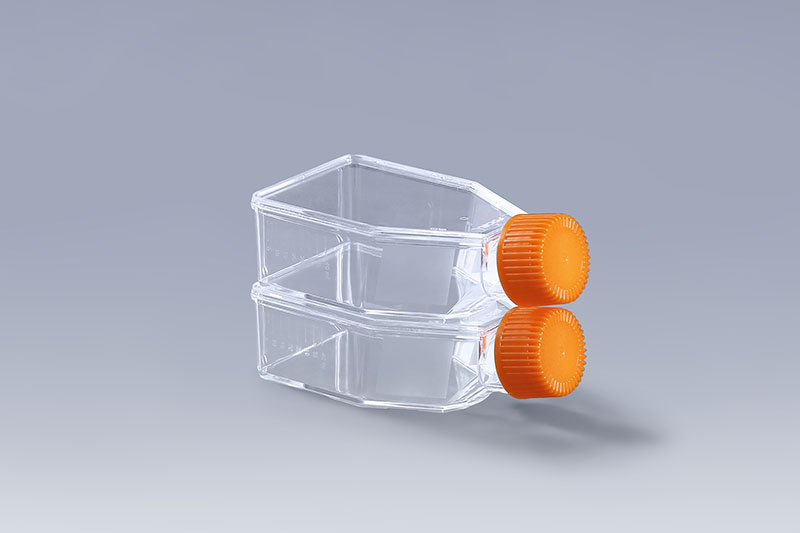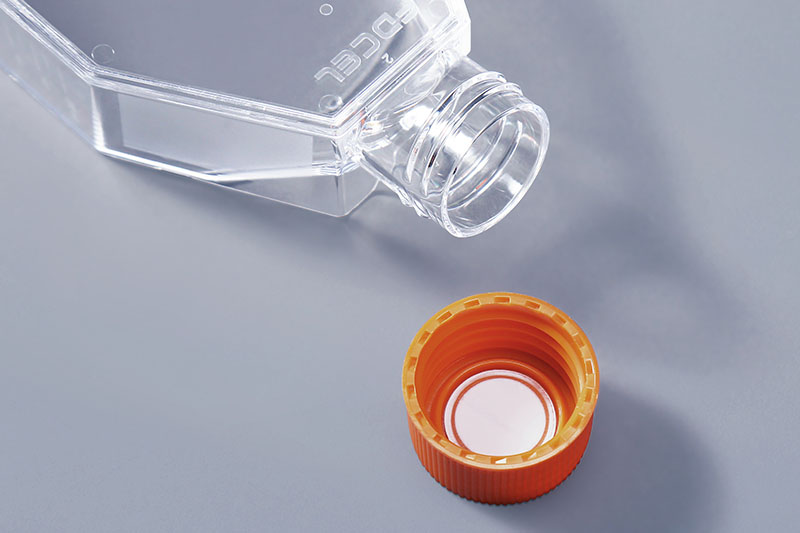How cells attach to the surface of cell culture flasks
Adherent cells need to adhere to the surface of the support to grow and multiply. Cell culture flasks are commonly used consumables for adherent culture. As a cell culture flask, how do adherent cells attach to its surface?
The cell culture flask is made of transparent polystyrene material, the surface of which is inherently hydrophobic, which is not conducive to the adherent growth of cells. In order to enhance the ability of cells to adsorb and bind proteins, it is necessary to modify the surface of the container and introduce hydrophilic groups to adapt to the growth of adherent cells.
FuDau T25 Cell Culture Flasks
The adherence process of cells can be divided into adsorption, contact, adherence, and expansion. The extracellular matrix secreted by the cells themselves will promote the adsorption of cells and the surface of the container, and then contact and adhere to the wall, and finally expand on the surface to achieve the purpose of growth and proliferation. Therefore, the adherence of cells is related to the ability of the cells to secrete extracellular matrix and the number of adhesion molecules expressed by the cells themselves, as well as the surface structure of the culture dish wall. In addition, some special cell adhesion promoters (such as laminin, fibronectin, serum expansion factor, etc.) are also involved in the cell attachment process. These cell adhesion promoters are proteins and generally exist in culture medium or serum.
FuDau T75 Cell Culture Flasks
In general, cells adhere to the extracellular matrix secreted by themselves and the adhesion-promoting factors in the culture medium or serum. The surface structure of the cell culture flask is also the key to whether the cells can adhere well.


评论
发表评论